Nottingham Forest, Hillsborough and a 30ft ‘no tragedy chanting’ banner at Anfield
104
It isn’t far from Martin Peach’s childhood home to the part of the village where, if you are a football fan, a memorial stops you in your tracks.
Through the estate, over to the main road, then up the hill towards the Cross Keys pub, and there’s the bench on your right. There is a flower bed built into the top of its stone surround and to the right of the seat, a plaque reads:
Erected in memory of Paul Clark.
Aged 18 years
Died at Hillsborough
15th April 1989
We took a walk there a few weeks back and neither of us realised at the time that the car that went past and honked its horn to say hello belonged to Tracey, Paul’s sister.
“Paul grew up just around the corner from me,” says Martin. “He was six years older than me. So, when Hillsborough happened, he had just turned 18 and I was 12. He was at one end with the Liverpool fans and I was with the Forest fans, witnessing the sort of things you never expect to see when you go to a football match. It was the next day that word started to go around that a lad from the village had died.”
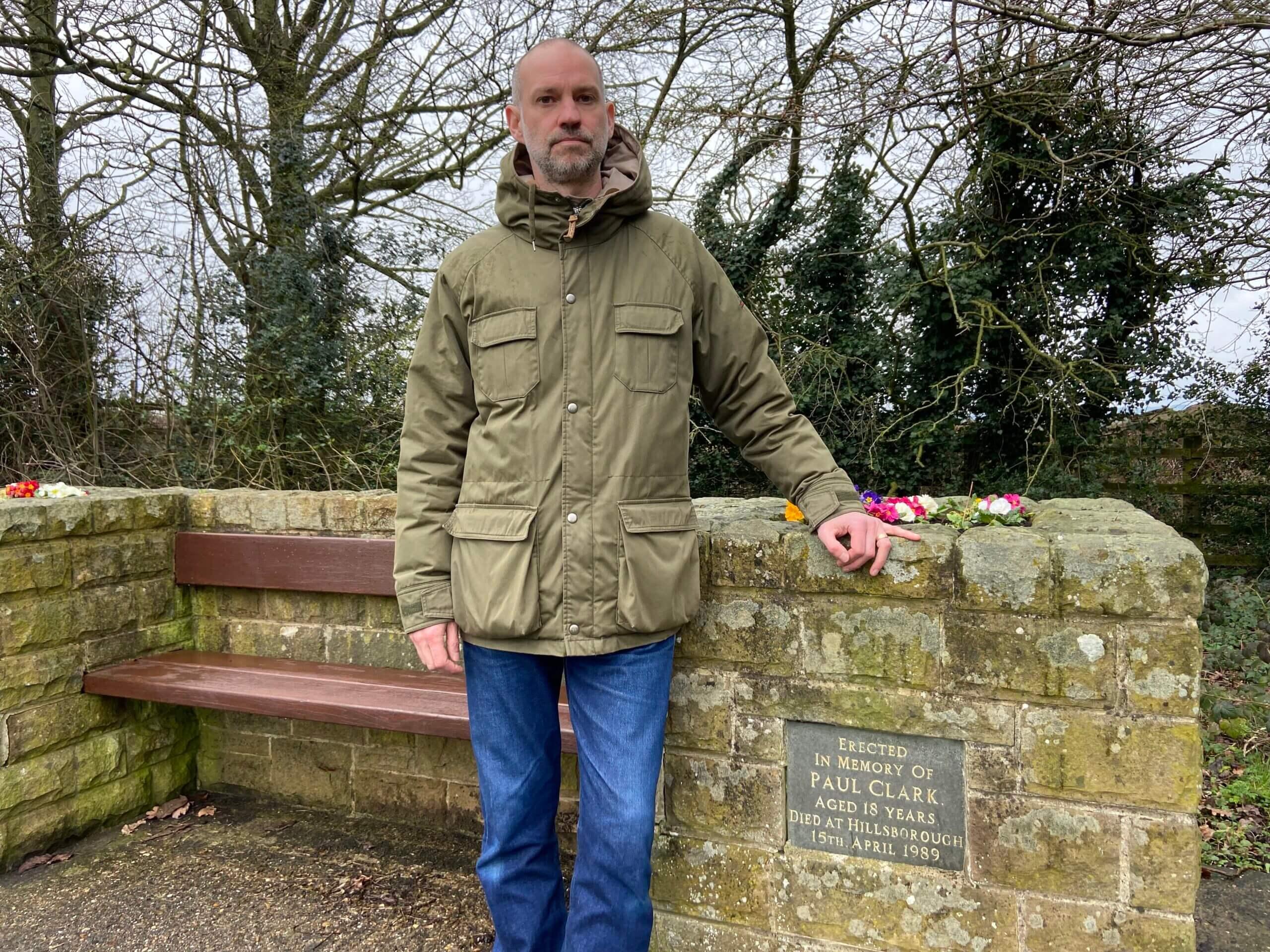
Martin Peach at Paul Clark’s memorial in Swanwick
It sometimes gets forgotten how young they were, those boys and girls who never came home from an FA Cup semi-final between Liverpool and Nottingham Forest, staged at the home of Sheffield Wednesday.
Forty-eight of the 97 dead were aged 21 or below. The youngest was 10. Thirty-seven were teenagers, crushed to death in Britain’s worst-ever sporting tragedy. You see the numbers and it makes you want to weep. They were just kids, so many of them.
Paul was a Liverpool fan who just happened to grow up here in Swanwick, an old mining village close to the Nottinghamshire-Derbyshire border, where most of the boys his age followed either Forest or Derby County, their local rivals.
He was an apprentice electrician but in another sense, he was still a boy. He had grown up with Ian Rush and Kenny Dalglish as his heroes. He rode a BMX bike. He slept behind a pair of Liverpool curtains, under a Liverpool duvet, with a Liverpool lamp on the bedside table.
In October 1988, he and a friend, Andy Booth, took Martin to a Forest-Liverpool game in Nottingham. Andy had passed his driving test, so he drove. Paul was alongside him and Martin strapped into the back. When they reached the City Ground, Martin went to sit in Forest’s Junior Reds section while the older boys headed to the away terrace.
“I was in awe of them, these older lads, with a car, standing in the packed Liverpool end,” says Martin, 34 years on. “We won 2-1 and on the way home they were winding me up about who I supported — all good fun. The semi-final at Hillsborough was six months later. Paul went with his dad and Andy. And I remember that day more vividly than any other day in my entire life.”
On Saturday, Forest visit Anfield for the first time in almost 25 years and a banner measuring 30 feet across will be held aloft in the away end.
Martin has helped to create it, along with a group of similarly minded home-and-away Forest fans. “Respect the 97,” it will say, with Forest’s club badge in one corner and the Hillsborough memorial symbol in the other. “Solidarity with Survivors. No to Tragedy Chanting.”
After years of sitting up in the press box at Anfield and listening to the hurtful chants from visiting Manchester United, Chelsea and Manchester City fans, my expectation is Liverpool’s supporters will be moved, impressed and, in some cases, maybe even emotional. The away end at Anfield is not always so generous.
The vast majority of Forest fans will respect its message, too. The banner’s organisers are all known on the Forest scene: time-served supporters who have put in the hard miles. Some are veterans of the days when Brian Clough’s teams won European Cups and knocked Liverpool off their domestic perch (long before some other manager tried to patent that phrase).
“I hate sanitised football,” says Pete Hillier, one of those behind the creation of the banner. “I want football to be edgy. That is part of the fun rather than it being a sport where everyone is eating cucumber sandwiches with a rug over their knees.
“I’m quite prepared to stand there and sing, ‘You Scouse bastard’ when a Liverpool player hacks down Brennan Johnson. And when the Liverpool fans start singing, ‘We hate Nottingham Forest…’, you will hear me, and the rest of the away end, with our traditional response of, ‘And Nottingham Forest hate you, you bastards’.
“But it’s pantomime hatred. I have countless Liverpool friends. I love the city, the people and particularly their politics. I certainly don’t ‘hate’ them to where I will deride their dead and sing callous songs that will trigger people who have survived an awful, awful tragedy.
“There’s a line nobody should ever cross. It gets passed off as banter. In reality, it’s unimaginably cruel to chant about any tragedy: Hillsborough, Munich, Heysel, Bradford, Leeds in Istanbul or any other. People dying is not banter.”
It is a message of solidarity at a ground most Forest fans have long regarded as enemy territory. But it is also easy to understand why the relevant people are wary because, if you know the history, you will appreciate it has been a complicated relationship, at times, between the two clubs.
When Jurgen Klopp’s team visited the City Ground in October there were sporadic bursts of the “Always the victims, it’s never your fault” chant that cuts so deeply with Liverpool fans and has become increasingly prevalent this season.
A lot of younger Forest fans – the generation who have never previously had to think too much about Liverpool because the clubs were in different divisions – argued at the time that they did not realise it had Hillsborough connotations. And maybe, in some cases, that is plausible when this is an entirely new subject for so many people.
“My son’s 14,” Martin says. “He said to me afterwards, ‘I thought it was because Klopp was a bad loser and they always wanted an excuse if they were losing’. It’s about awareness and, after that, respect for the people who died.”
This, in a nutshell, is why a group from Nottingham travelled to Anfield last year to lay a wreath at its Hillsborough memorial and spend time with some of the people whose lives had been affected the most.
“I don’t just see the people who died as 97 Liverpool fans,” says Martin. “I see them as 97 people, one of whom happened to grow up just round the corner from me. All of them have their own stories. Paul chose Liverpool, I picked Forest. And if there’s one set of supporters anywhere on the planet who ought to ‘get’ Hillsborough, it’s us.”
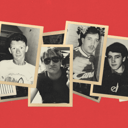
GO DEEPER
Hillsborough - the 97 remembered: An Athletic special project
To introduce him properly, Martin is someone I know from matchdays; a fellow Forest supporter I have seen over the years in various away ends and football pubs.
Most of us call him Peachy, though not everyone realises he runs the @sincederby Twitter account, which logs how long it’s been since Forest last lost to arch-rivals Derby, and is diligent enough to update it every day (currently, it’s 2,011 days). Which is dedication.
I was another Junior Red of the 1980s, a football-daft kid wearing a Scousebusters T-shirt (Ghostbusters had been at the cinema not long before) and, in the spring sunshine before that semi-final, distinctly second best when some Liverpool fans challenged me and my group of schoolfriends to what turned out to be a very one-sided match in the park next to Hillsborough.
Those lads gave us a football lesson. Many times, I have wondered what became of them when they left us, at around 1:45pm, and headed off towards their allocated side of the ground.
I remember, as Martin does, the initial reaction of the Forest fans when the first Liverpool supporters made it out of the Leppings Lane end.
Nobody at our end knew what was happening, only that the game had been stopped and there were Liverpool fans on the pitch. We had the Kop end and it throbbed with anger: “You’re just a bunch of wankers …” Loud, very loud.
It feels awful even writing that now. But I also remember the moments when the hard, thudding reality dawned and one Liverpool fan broke through the lines of police officers with dogs (the police, for reasons unexplained, had formed a cordon across the pitch) and ran towards us, trying his best to make it clear this was not what we thought.
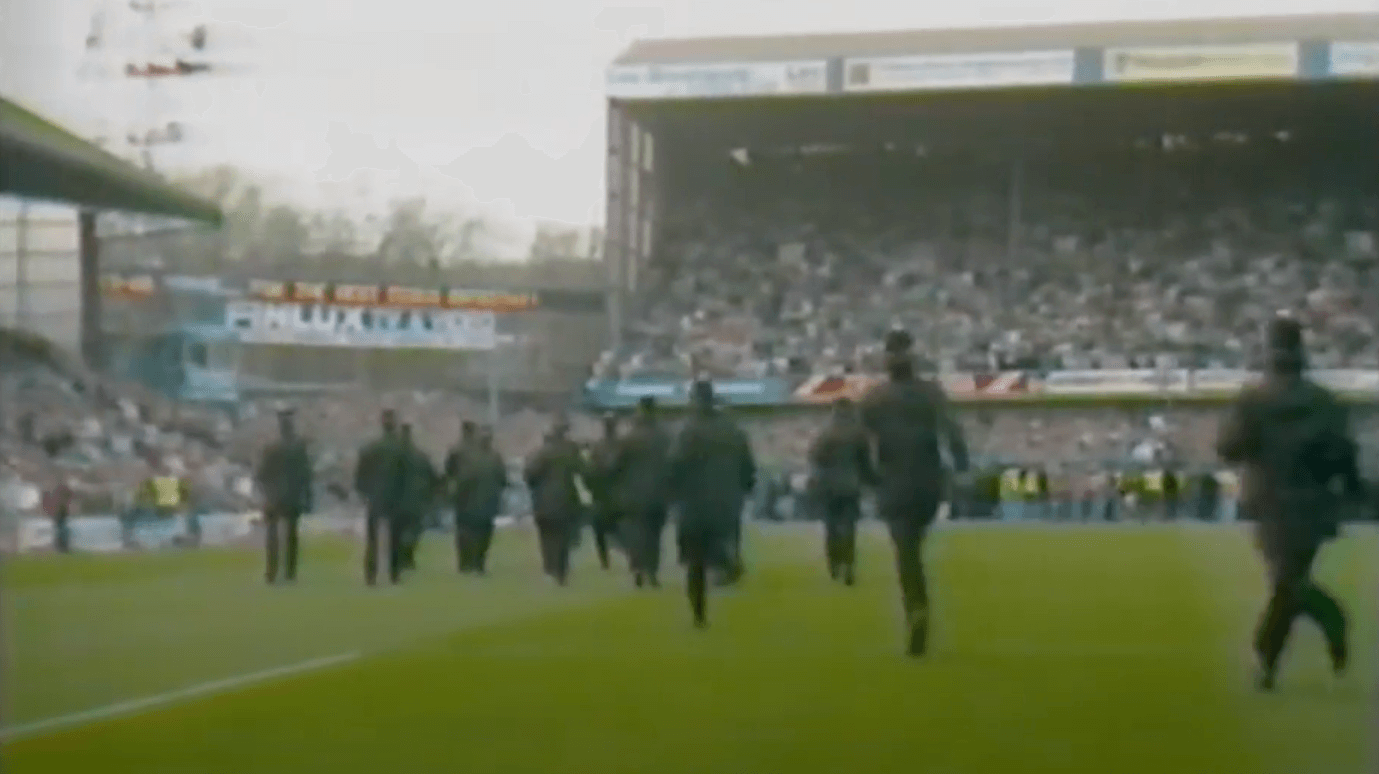
Police race onto the field at Hillsborough to form a cordon between the two ends of the stadium (Image: BBC TV)
I wonder if Martin recalls the same guy all these years later, and it turns out he does. “A heavy-metal, rocker type,” he says. “When he reached the goalmouth, he broke down on his hands and knees, screaming and shouting in distress.”
More than anything, I remember the updates on the radio as my group headed back to Nottingham. One of the dads had driven us to Sheffield in his work van and, in the time it took to get those 40 miles down the motorway, the death toll had gone up from eight to 75.
Since then, it can be really hard to explain to outsiders how the relationship between Liverpool and Forest has, for the most part, felt like one of separation. Most people, in any other sport, would assume that being involved in such a disaster would form a special bond uniting the two sets of supporters.
It hasn’t turned out that way, though, and even in a sport as tribal as football, it isn’t easy to understand why, given the sheer loss of life at Hillsborough and everything that has subsequently come out about the cover-up, the scandal, the smears.
The rivalry between the clubs was seriously intense in those years and, though younger fans today might not fully understand the history, it had been that way for some time. Even at the rearranged semi-final, staged at Old Trafford on May 7, the initial ceasefire quickly made way for chants of mutual antipathy.
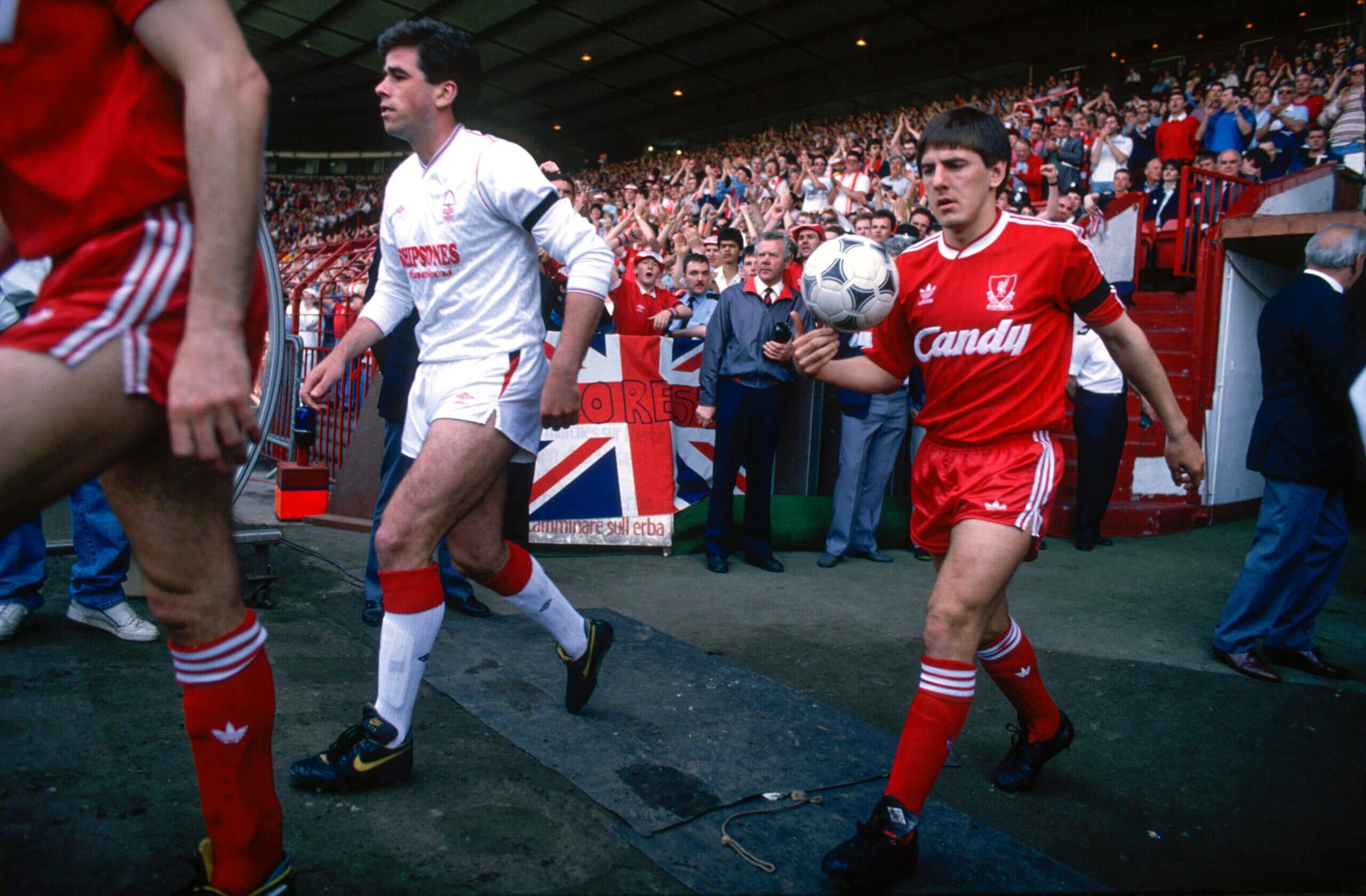
Liverpool and Forest walk out wearing black armbands for their rearranged FA Cup semi-final in 1989, three weeks after Hillsborough (Photo: Mark Leech/Offside via Getty Images)
Last season, though, was the first time “Always the victims” was heard at the City Ground. On the same day, stickers including Hillsborough-related slurs were slapped on lampposts along the route you’d take from Nottingham’s railway station, along Meadow Lane and over Lady Bay Bridge, to the part of the ground that houses away supporters.
Pete Hillier, a Forest season ticket holder of 50 years, made it his business to go down and scratch off each one.
“Overall, we have brilliant supporters,” he says. “The vast majority just want to support our team passionately and properly. But that was nastiness. Somebody had obviously gone down early, under the cover of darkness presumably, to put them on every lamppost.”
Maybe us Forest fans might also have to acknowledge that Clough, an idol in Nottingham with a statue in the city centre, was not infallible. When Clough talked, football listened, and his initial belief, expressed in his 1994 autobiography, was that Liverpool fans had caused the Hillsborough disaster.
Clough did apologise before he died in 2004 and the relevant passages were expunged from later editions of the book. But it is remembered on Merseyside. Attitudes hardened on both sides. Even now, it is possible to find Forest fans on internet sites who prefer the theory that Clough was right, because Clough was always right, and that it should be OK to say it.
What they don’t fully comprehend, perhaps, is the number of Forest fans who have received help from the Hillsborough Survivors Support Alliance (HSA) via therapy programmes funded by Liverpool supporters.
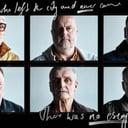
GO DEEPER
Life after Hillsborough, told by the men and women who survived
There were, after all, 28,000 of us Forest followers in that stadium who watched the horrors unfold and saw, close-up, the desperate, often futile attempts to save lives. Some still suffer from flashbacks, panic attacks and nightmares. Many have been left with depression and other issues.
They tend not to share their stories because, where we are from, everyone is conscious it was another club’s disaster. But the damage, psychologically, is real. Some found it too traumatising to return to the sport that used to shape their lives.
“There are eight of us, all of a similar age, who sit together in the Trent End for home matches,” says Pete, who was 25 at the time of the disaster. “Six of them still can’t speak about it. Two have never even told their wives and kids they were there that day. They have just clammed up because they can’t deal with it.
“I have had my own issues, mostly as a result of an overwhelming sense of guilt and shame, and that resulted in some lost years. We saw some awful things.”
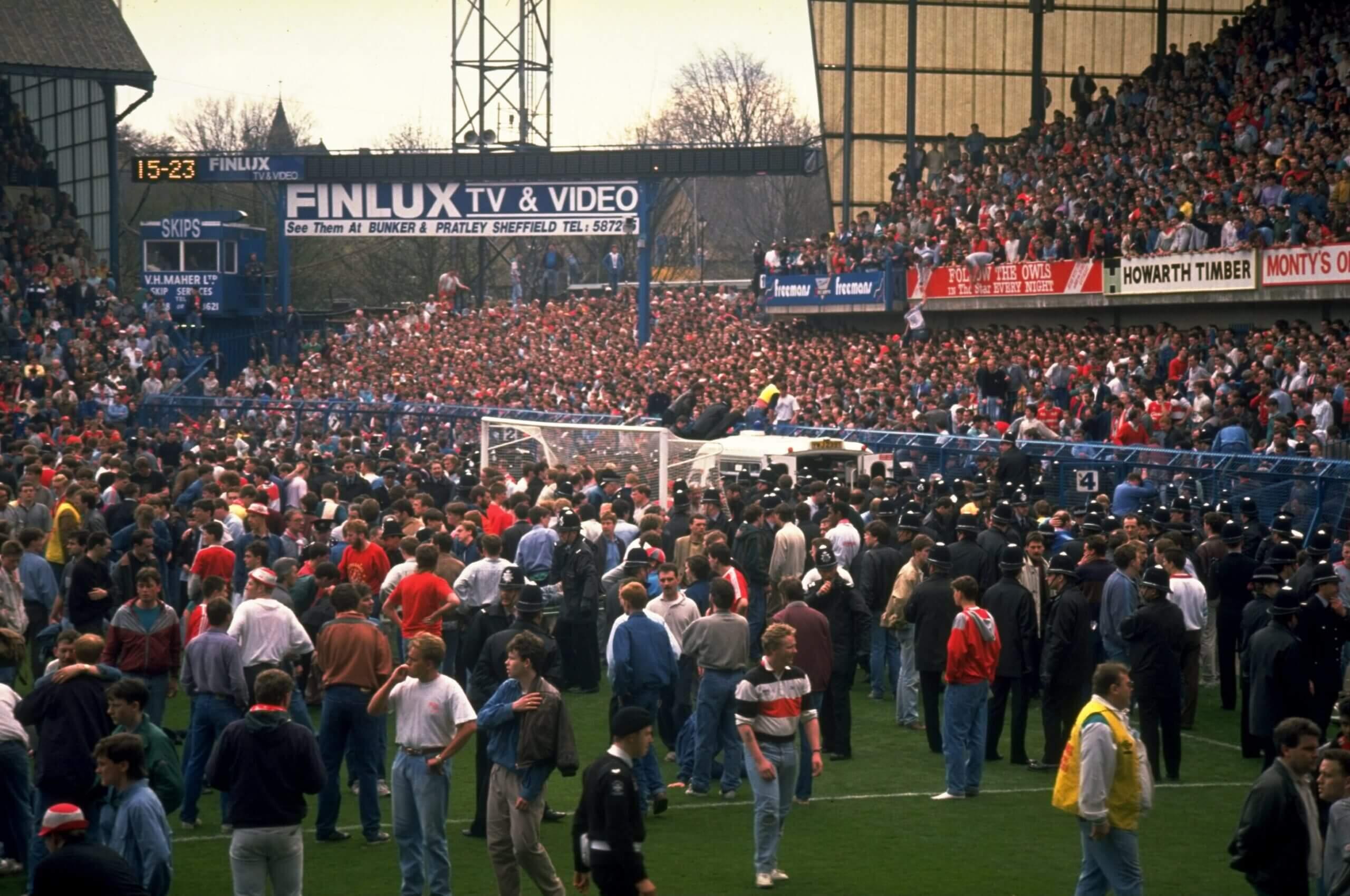
Nottingham Forest fans were also affected by the dreadful events at Hillsborough in 1989 (Photo: David Cannon/Allsport)
As for Martin, he goes back to Swanwick on every anniversary to lay flowers on Paul’s bench. The only time he has missed this routine, wherever he has been living, came three years ago during the first COVID-19 lockdown.
Paul’s family leave their own flowers, too. Another bouquet is signed ‘Nottingham Forest’. For a long time, Martin assumed that it came from the club. Then, one year, he arrived as it was being delivered. It turned out it wasn’t from the club but a fellow Forest fan who lived locally and wanted to show his respects to Paul and his family.
“My experiences of Forest fans are that most are sympathetic and understand what happened,” says Martin, who is now 46. “There are a few whose views are clouded by their hatred of Liverpool, which can override everything, and they are the ones who shout the loudest sometimes. But there are lots of Forest fans who were at Hillsborough and have really deep feelings.”
One of them, Steve Bennett, used to write to Forest every year to ask why they never did anything to mark the anniversary. Most of the time, there was not even the courtesy of a reply. But he kept writing, year after year, and eventually somebody got in touch to say, in effect, it was Liverpool’s disaster.
“Their attitude was that it was not their responsibility to do anything,” Steve says. “What they didn’t seem to appreciate was that there are actually many Forest fans who suffered greatly from what they saw at Hillsborough.”
Steve, who has been attending Forest-Liverpool matches since the late 1970s, visited Anfield on the weekend after the disaster and queued for four hours to enter the stadium so he could pay his respects. He left his Forest scarf at the front of the Kop, which had been covered with flowers and other tributes, and then walked down the pitch to the away end, where he stood in his own thoughts and wept for the dead.
“I have a real affection for Liverpool, and that’s because of what I witnessed at Hillsborough,” he says. “I regularly used to go to the remembrance services at Anfield, every time wearing a Forest scarf, and there were always Liverpool fans who would come up, shake my hand and thank me for being there.”
As for Forest’s position on the issue, something has clearly changed, given that 97 seats at the City Ground were left empty as a sign of respect during their FA Cup tie at home to Liverpool last season.
Last Saturday, on the 34th anniversary, the club posted a message on its website at 3:06pm — the time the original semi-final was stopped — and Forest officials will lay a wreath at Anfield’s Hillsborough memorial before the game this weekend. The banner will be lifted as part of a minute’s applause at 3.06pm.
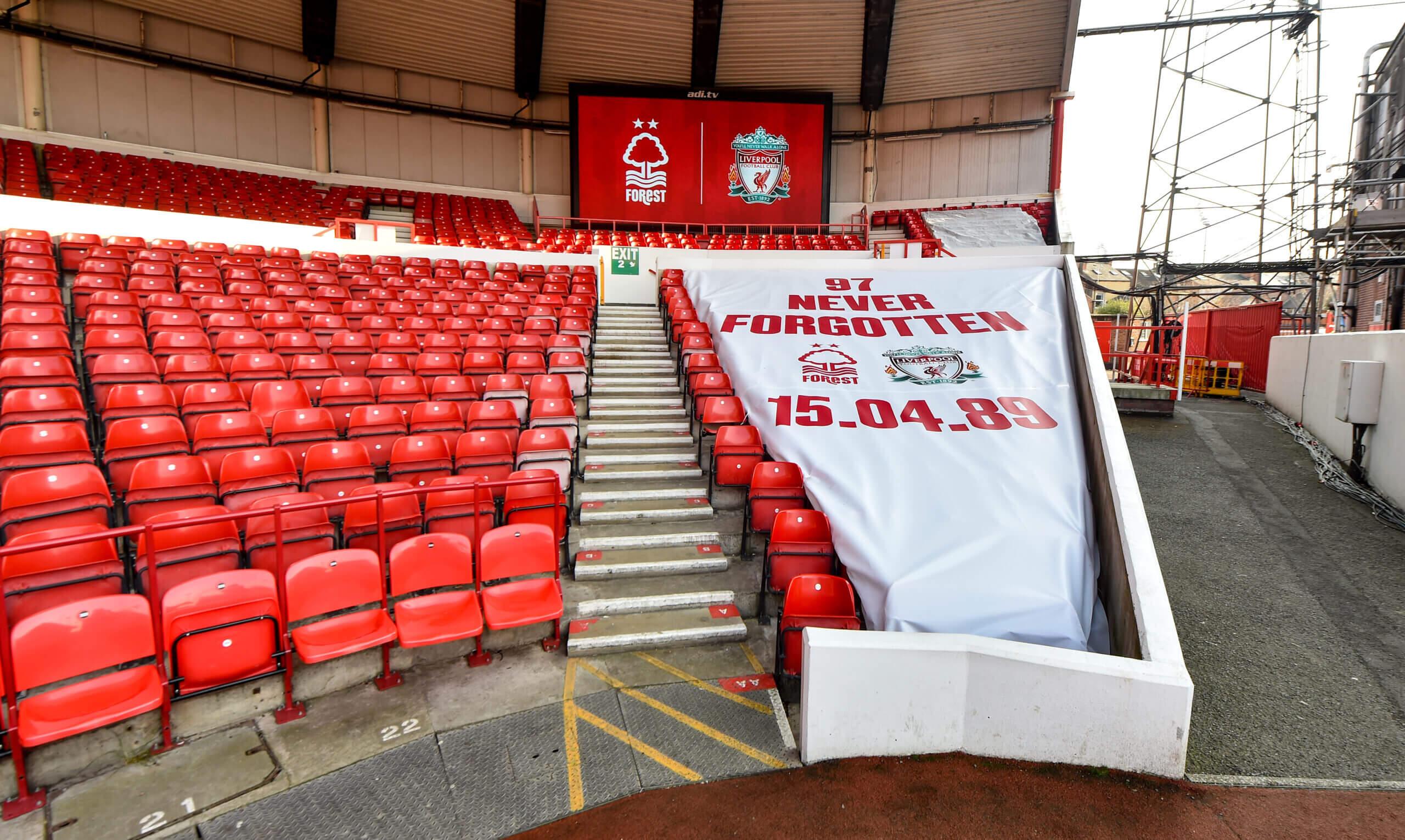
Nottingham Forest set aside 97 seats in memory of those who died at Hillsborough for last season’s FA Cup quarter-final against Liverpool (Photo: Andrew Powell/Liverpool FC via Getty Images)
Until now, however, there has never been a show of unity like the one that will be evident on Saturday.
The organisers have been liaising for weeks with HSA and Spirit Of Shankly, the influential Liverpool fans’ group, and the timing feels particularly relevant given that Manchester City and Chelsea have, in the last few weeks, separately condemned the “hateful” chants heard at their matches against Liverpool. There are calls, backed by Liverpool, to make all chanting about football tragedies illegal.
As Klopp wrote in his programme notes for Liverpool’s previous home game against Arsenal two weeks ago: “This needs to stop. Not because I say so, or the police say so, or whoever — it needs to stop because the people who continue to suffer, including families of those who died and survivors, tell us how much these songs hurt them.”
A Twitter account called @nohatechants has been set up by Forest fans to reiterate this message and perhaps this is also an appropriate time to recall the lead article that appeared in Brian — the original Nottingham football fanzine — in May 1989.
“We went to see Liverpool FC get hammered and we saw people, the same as ourselves, die,” its author, Steve Hanley, concludes. “It seems, at the time of writing, that football grounds are going to change forever. Whatever happens, those of us at Hillsborough on April 15, 1989, spent 100 minutes staring at the most awful event of our lives.”
